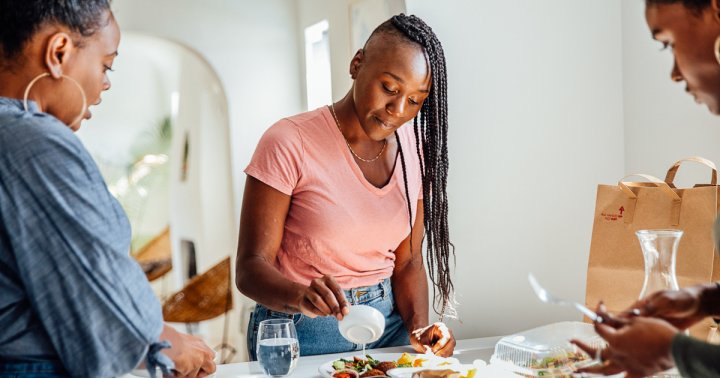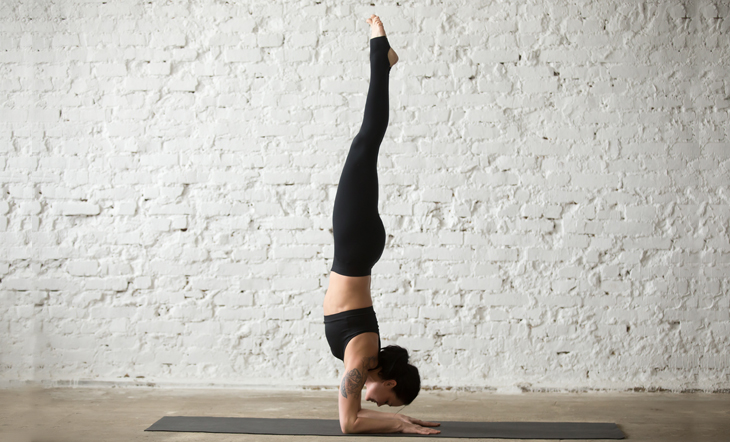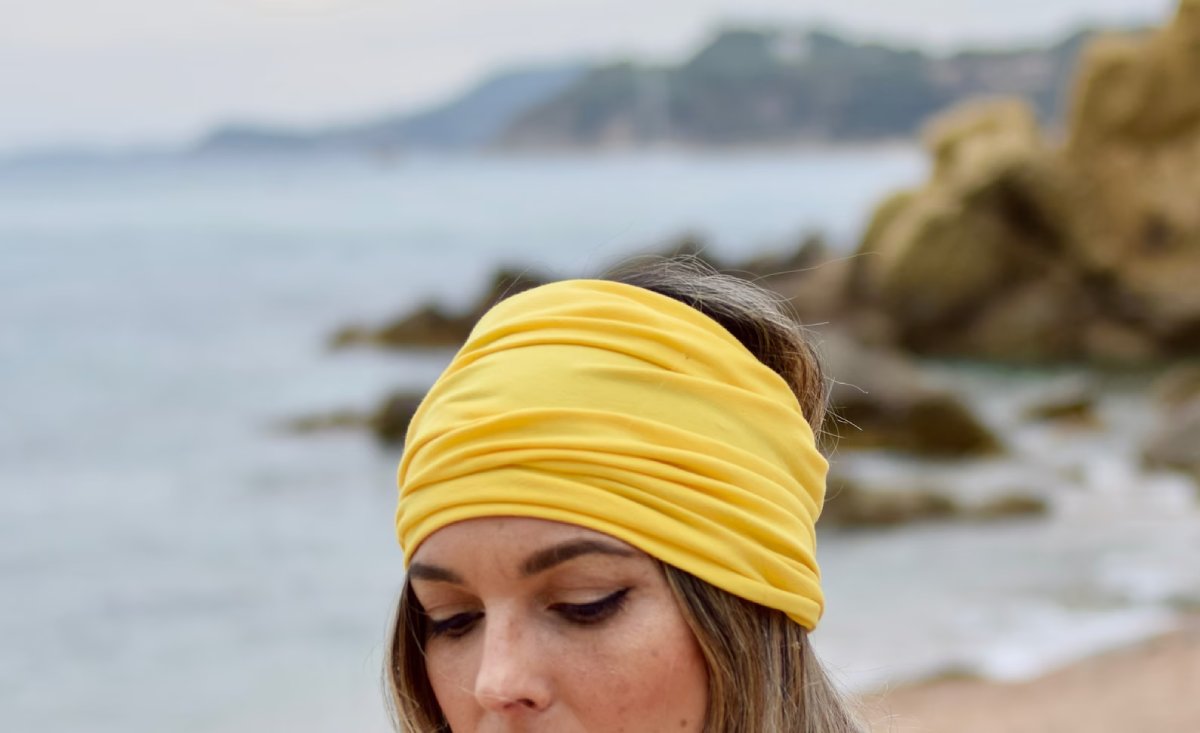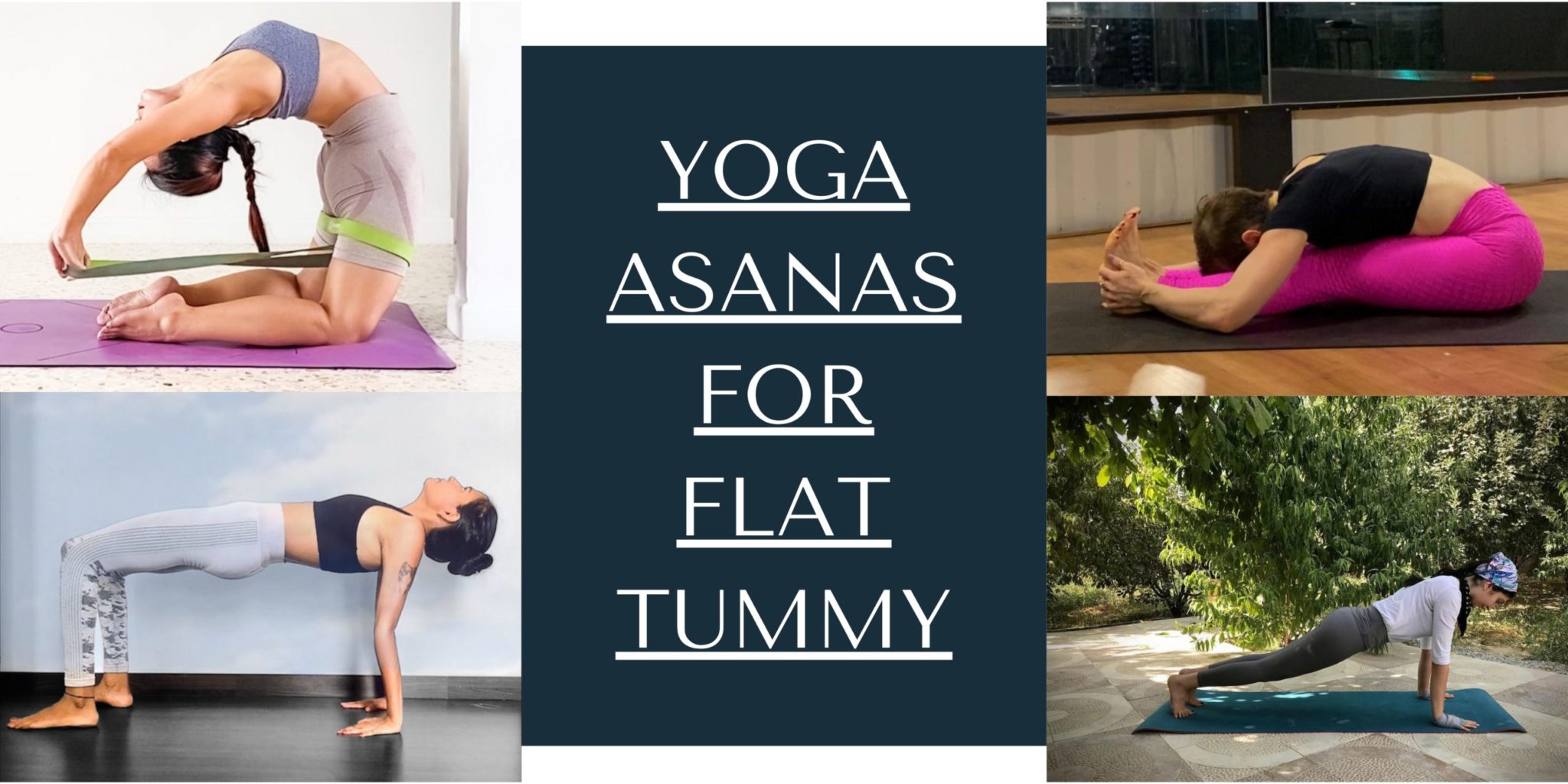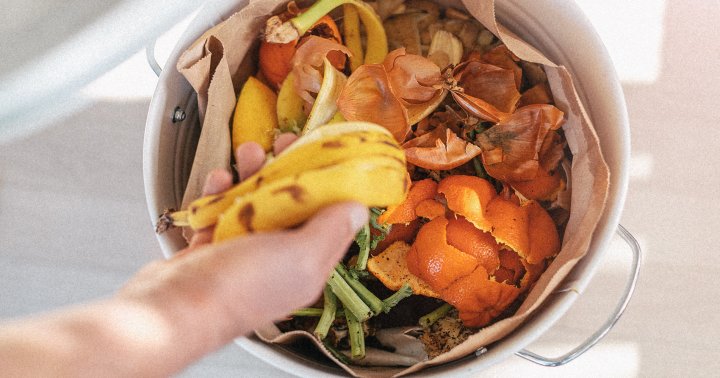Podiatrists & Trainers Agree: This Is One Of The Best Workout Shoes For Women
Plus, one pair every expert recommended.
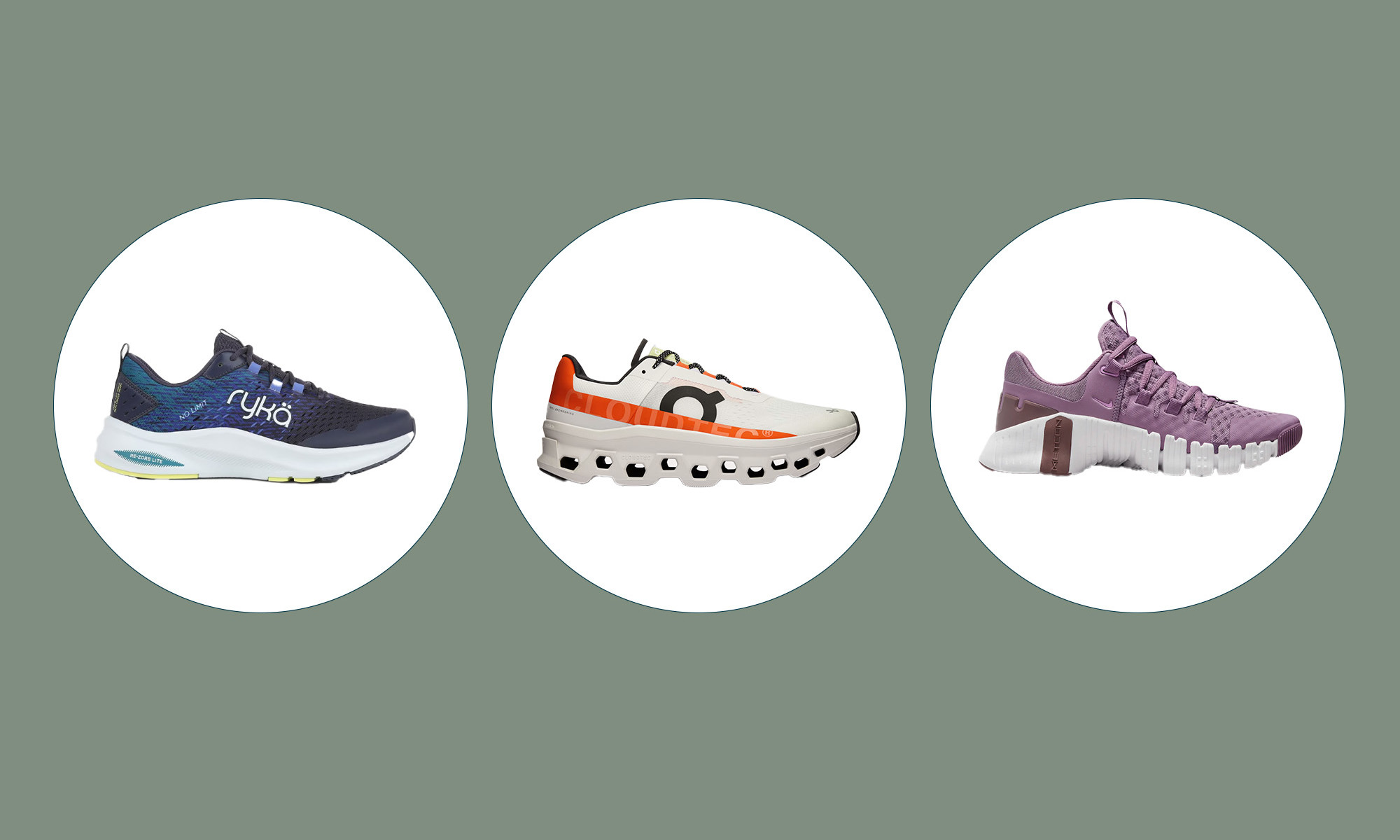
August 16, 2023 Our editors have independently chosen the products listed on this page. If you purchase something mentioned in this article, we may Staying active has tremendous benefits to our physical health, mental health1, and longevity2—and, while committing to a workout routine that you love is the first step, choosing the best workout shoes for women is critical in how well your body performs. According to Julia Stern, NYC-based fitness trainer and founder of Show Up, “Specifically for women, maintaining muscle mass as we age protects bone density, increases our immune system, and most importantly, keeps us from getting injured when performing functional movements throughout our day.” With the right workout shoes, you'll have better form, less impact on your joints, and a smaller risk of injury. Still, there's no clearcut shoe that works for everyone. What's best for you will depend on your foot type, any existing conditions, and the style of workout you're performing. Keep scrolling to find some top picks that meet podiatrist and physical therapist guidelines.
What to look for in workout shoes for women
The key to choosing comfortable, supportive sneakers is to understand the movements of the type of workouts you’re doing. Stern says, “Gym shoes are sneakers, but not all sneakers are gym shoes. I own a really cool pair of platform Nikes, but I would never ever workout in them. A lot of gym shoe brands expanded into lifestyle, so it’s important to know the shoes you’re working out in are meant for workouts!”
Dr. Hillary Brenner, podiatrist and founder of Dr. Brenner’s RX, recommends looking for “lots of arch support, a wide toe box with plenty of cushion, a thick, chunky heel, and the right amount of flexibility and soft materials around bony prominences.” Her biggest tip is to make sure the shoe fits properly. Brenner says the distance from the top pof the big to to the tip of the shoe should be about a thumb's width.
Board certified podiatrist Anne Sharkey, based in Austin, TX, says she always looks for the APMA (American Podiatric Medical Association) seal when shoe shopping. This seal of approval is given o products that the APMA believe promote good foot health.
Per Sharkey, you should choose a workout shoe tailored to your activity of choice. "Also, consider your foot type when choosing workout shoes," she suggests. "Feet that are flat require a stability shoe or a motion control shoe. Feet with high arches will do best with a cushioned shoe or neutral shoe."
Sharkey adds that a shoe should fit well from the first wear—you should not have to break it in.
“The type of workout shoe you wear really depends on the type of workout you’re doing," Stern adds. "For example, when lifting weights, you want a flatter shoe that grips the ground. But when you’re running, a shoe with more support that helps spring you forward can help prevent injury. Overall, you also want to make sure that you’re comfortable in the shoe. The shoe should move with you, not against you.”
Below, find four cornerstone questions Stern asks herself when shopping for the perfect pair of workout shoes:
Is it snug? “Some shoes, especially when made of knit material, can leave too much room for your foot to move around in the shoe, which isn’t great for ankle health and stability. We want to make sure that your shoes are working for you, so you can move around as freely and powerfully as you can without sliding around in there,” she explains.
Is it too narrow? “I have a wider foot, and I’ve found that some brands of shoes are too narrow for my feet (you’ll know if it’s painful). When you’re lifting weights, you want to mimic being barefoot as closely as possible. A shoe that’s too narrow will squeeze your feet and your toes together, preventing a solid grip with the floor,” she says.
Does it support the workout I’m doing? “A trick to help you decide this one: More jumping and moving around needs more support in the foot. Stability work and lifting weights need less support," she shares.
Do I love them? “This may seem obvious, but buy shoes that you can see yourself wearing," she says. "There are so many options, that it’s easy to find a functional shoe that brings you joy. I used to buy so many different pairs, but realized I wasn’t wearing them because it was too much work to style them. I invested in 3 great white pairs that go with everything and now it’s all I own."
Our picks of the best workout shoes for women:
Best gym shoes: Ryka No Limit Training Shoe
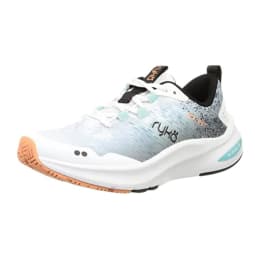
Pros:
APMA certified & recommended by podiatristsHigh shock absorptionWell cushionedCons:
Some reviews wrote that the back of the arch felt stiffMaterials:
Premium meshPartially recycled liningsPadded collar
Sizes available:
5 - 12, half sizes availableWide available
Weight:
270 g / 9.52 oz per shoe
Designed for a woman’s unique foot shape, muscle movement, and build with a narrower heel, roomier toe, and softer foot cushioning, Ryka’s No Limit Training Shoe is one of the best shoes for gym workouts.
Whether you’re in sport mode and need agility or want to be quick on your feet during cross-training workouts, the brand’s RE-ZORB® LITE technology delivers lightweight shock absorption and impact protection while the Pivot Point design on the rubber sole makes for smooth, easy turns.
This shoe also has loads of arch support, which Brenner says is top priority—and it has the APMA seal of approval.
Best dance cardio shoes: APL Women’s TechLoom Pro

Pros:
Sleek design with 34 colorways100% vegan materialsFitness trainer’s top pickSizes available:
5 - 11, half sizes available
APL’s TechLoom Pro shoes are made from 100% vegan materials, with a low profile that helps you maintain a full range of lateral movement (ideal for dance cardio).
Inspired by the shape of a feather, the outsole incorporates natural motion flex grooves that react to every twirl, spin, and jumping jack. Plus, the shoe’s upper construction is seamlessly woven from performance textiles that results in a Cinderella-like fit.
Fitness trainer Julia Stern swears by these APL’s TechLoom Pro shoes for her workouts and training sessions. She says, “Dance cardio is my jam! When I’m teaching my dance cardio classes, I love APLs. Technically they’re a running sneaker, but the cushion isn’t enough to throw off my stability when bouncing around."
Advertisement
This ad is displayed using third party content and we do not control its accessibility features.
Best weightlifting shoes: NoBull Womens Lifters

Pros:
Hand-made by skilled craftsmenMade with hand selected, high quality leatherWide, flat outsoleCons:
Appropriate for weight-lifting onlyOnly 3 colorwaysMaterials:
Premium sourced leather
Sizes available:
5 - 11, half sizes available
Weight:
17.6 oz / 498.9 g
Stern says the best weight lifting shoes should help you grip the ground when lifting weights. NoBull’s women’s trainers overdeliver, with an elevated heel plus a stacked leather midsole—the result of hours of precision and handwork per pair.
The shoe's stabilizing structure and wide, flat outsole are designed to help you find your footing and stay sturdy as you weight lift, power lift, and squat. This increases your ankle’s range of motion so you can squat deeper and lift heavier.
NoBull’s patented SuperFabric® is treated with durable water repellent coating, so you won’t have to worry about sweat stains. Lastly, the functional strap offers a super secure fit.
Our commerce editor, Carleigh Ferrante, uses these shoes regularly for weightlifting and says they make her feel more supported and steady during workouts and stronger in the long run.
Best workout shoes for wide feet: Altra Solstice XT2
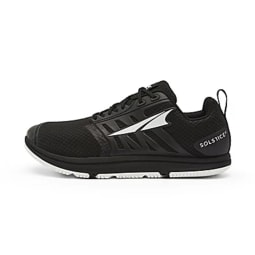
Pros:
Wide toe boxGood gripTop pick from chiropractorCons:
Only 2 color optionsMaterials:
High abrasion EVAAthletic rubber outsoleBreathable mesh
Sizes available:
5.5 - 12, some half sizes availableWide and medium available
Featured in our round up of the best gym shoes as “best for wide feet” and the best weight lifting shoes as “best for women," these shoes are an amazing option for women with wide feet.
The shoe’s unique minimalist design gives those with wide feet the room needed to feel comfortable. Research shows zero-drop shoes can reduce your risk for injury and give you more power by putting your foot in a very level position.
What makes Altra’s women’s training shoe stand out from the rest is that it’s been molded around the unique shape of the female foot. Plus, the shoe itself is lightweight and flexible and moves well with your foot.
This is the weightlifting shoe of choice from chiropractor and co-founder of Driven Fit, Sarah Sponaugle. “In a good weightlifting shoe, the toe box should allow for the toes to have room to move and spread.”
This shoe’s low profile, lateral support, flexibility in the front of the shoe, and wider toe box check all of Sponaugle’s boxes to activate the toes and muscles in the feet for a good foundation as you workout—even beyond the weight room.
Advertisement
This ad is displayed using third party content and we do not control its accessibility features.
Best cross training shoes: Flux Adapt Trainer

Pros:
Good for hybrid training, weight lifting, and HIITEasy to cleanFitness trainer approvedCons:
No half sizes availableSome reviews say shoes run largeSizes available:
5 - 15, no half sizes
For those looking to glide through the day (and different workouts) in style, Flux’s training shoe combines cutting-edge technology with a sleek and modern design.
This shoe is a top pick from fitness trainer Julia Stern because of its groundbreaking, responsive sole technology that adapts to the width of your foot. With a focus on flexibility and stability, these shoes have advanced cushioning that adapts to your movement, specifically 100 individual massaging cushions that mimic barefoot proprioception.
With a wider toe box, ultra-flexible sole, and just the right amount of stretch throughout, it makes perfect sense why fitness trainers around the world are obsessing over Flux.
Best running shoes: On Cloud CloudMonster
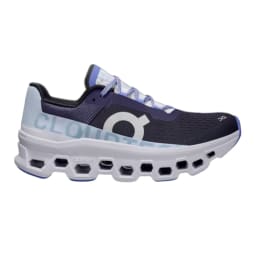
Pros:
Extra cushioned lessens impact14 fun colorwaysCons:
Not a lot of ankle supportMaterials:
Recycled polyester
Sizes available:
5 - 11, half sizes available
As the name implies, the CloudMonster is akin to running on fluffy, cumulus clouds, which I (the writer!) can personally attest to, because they are my favorite pair to run in.
Meticulously engineered with On's signature CloudTec® technology and “monster level” cushion, the Cloudmonster sneakers boast a unique outsole comprised of individual cloud-like pods that adapt to your every movement, providing exceptional impact absorption and an ultra-responsive feel.
From personal experience, this shoe doubles down on cushion but still feels lightweight. As a long-distance runner who struggles with hip, knee, and joint pain, the CloudMonster has saved my joints from pain during and after runs and even allows me to run farther distances that other shoes don’t. It’s road running style is forward, so there’s plenty of momentum to help spring you along your run.
Advertisement
This ad is displayed using third party content and we do not control its accessibility features.
Best workout shoes for narrow feet: Nike Metcon
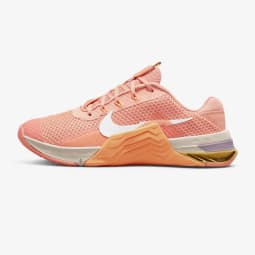
Pros:
Superior stabilityCustomizable designStylish designCons:
Some reviewers with narrow feet felt the heel was too wideSizes available:
3.5 - 23.5, half sizes available
One of the best gym shoes in a previous mindbodygreen roundup, this pick runs on the narrow side. Expect a narrow toe box and snug fit, with a slightly wider heel that’s supportive of your whole workout, from weight lifting to sprints.
If you’re on the hunt for a eco-conscious gym shoe choice, Nike’s innovative design team transparently shares its materials, processes, and movements towards a zero waste future on the company website.
As Nike's lightest metcon yet, this shoe boasts an average rating of 4.5 out of 5 star rating. People rave that these shoes are the best option for Cross Fit training, with great arch support and the sensation of hugging your foot.
Best walking shoes: Vionic Walker Classic
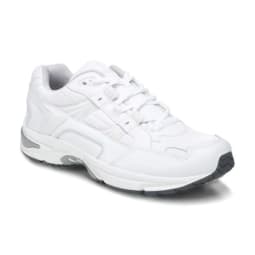
Pros:
Thick arch supportAmerican Podiatric Medical Association (APMA) Seal of AcceptanceRemovable insole for orthoticsCons:
Not machine washableSome reviewers say they feel heavyMaterials:
Water repellent leatherSuede uppers
Sizes available:
5 - 12, some half sizes availableWide and medium available
For all your hot girl walks, Vionic is an APMA-certified brand of footwear and orthotic inserts known for its innovative and stylish craft designed by podiatrists.
These orthopedic shoes are designed to alleviate common foot-related issues such as plantar fasciitis, overpronation, and heel pain and delivers superb arch support, heel cushioning, and breathability as you walk. Plus, we love that the sleek and stylish leather is premium, full-grain, and water repellent.
Need to input your own custom orthotic inserts? This shoe’s removable insole with a .5 elevation for extra heel-to-toe alignment makes it easy.
Advertisement
This ad is displayed using third party content and we do not control its accessibility features.
Best pickleball shoes: FILA Volley Zone Pickleball Shoes
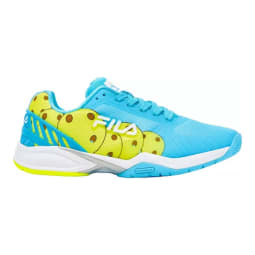
Pros:
Budget friendlyWide and tall toe boxBreathableCons:
Available in bright colorways onlyLess ankle support than other shoesMaterials:
Wipe-clean leatherSynthetic upperBreathable mesh
If you’ve hopped on the pickleball bandwagon, aka the fastest growing sport in America, you’ll need a pair of the best pickleball shoes to provide the stability, traction, support, and comfort to elevate your game and keep you comfortable on the court.
These shoes have a sturdy rubber outsole and a circle pivot point that helps you change directions quickly, mesh upper that encourages airflow plus their colorful, and stylish aesthetics which bring good vibes to every outfit. It also boasts a wide and tall toe box so that your toes won’t get smushed and an extra padded midsole to absorb shock.
Best expert-recommended: Hoka Bondi 8
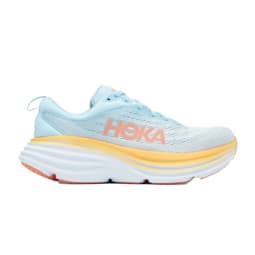
Pros:
Maximalist cushioning and supportMade with some recycled materialsEarned the APMA Seal of AcceptanceMaterials:
Semi-recycled polyesterMemory foamEVA midsoleRubber outsole
Sizes available:
5 - 12, some half sizes availableWide and medium available
Every expert we interviewed touted Hoka as one of their top choices for the best workout shoes for women. Maybe it’s the rear crash pad which affords an incredibly soft and balanced ride from heel strike to forefoot transactio, or maybe it’s this model’s softer, lighter foams and brand-new extended heel geometry.
The Bondi 8 makes for a great shoe for those with high arches because they have a great offloading feature that provides good balance transfer between heel strike and toe-off. We also shouted them out as the best for high impact in our roundup of the best rocker bottom shoes.
Brenner raves, “Hokas are my personal favorite. I use them for running and working out and personally have great results”—and Sharkey adds, “I like the Hokas for stability when I run.”
Fitness trainer Julia Stern agrees, “[I love that] Hokas are extra cushiony and feel great on trails, though they may feel a bit heavy on pavement.”
Brenner advises future Hoka fans, “Just make sure you have good stability before wearing these shoes as Hokas are maximalist so for some people this can make them unstable. The base of the shoe is made of material called EVA (ethylene vinyl acetate) which is a foam that gives a lot of cushion.”
Advertisement
This ad is displayed using third party content and we do not control its accessibility features.
How we picked:
Cushion
We selected sneakers with enough cushion to help absorb shock and promote comfort, keeping each specific activity in mind.
Quality
Per our expert's advice, we prioritized shoes with the APMA Seal of Acceptance. Some shoes have been tested by our team, and others we relied on reviews to confirm quality and durability.
Expert insight
Some shoes on our list are direct recommendations from the podiatrists and fitness trainers we interviewed. Others were chosen by our team based on our expert's guidelines and additional research.
Versatility
We included sneakers that will work for a variety of activities. Whether you're training indoors or outdoors and performing HIIT or low-impact workouts, there's something on the list for you.
How should workout shoes fit?
Our experts agree workout shoes should fit comfortably and snug. Sharkey says, “Workout shoes should fit well. They should not require ‘break-in’, and they should have adequate length so as to avoid cramping of the toes in the toe box.”
Sharkey shared a few helpful tips to identify red flags when shopping for the best workout shoes for women. “Excessively loose shoes would create instability which would place the wearer at risk of injury," she says. "It’s also a risk for blisters and skin irritation from excessive rubbing.”
Perhaps the hottest tip we've ever heard, though, is to shop for workout shoes at the end of the day. Sharkey says this is when your feet are most swollen and it "will ensure that [your new workout shoes] adequately fit at all times."
Brenner emphasizes workout shoes should be snug, but not too tight. “The width and shape of your shoe should match the width and shape of your foot, and the tip of your big toe should be a thumbs-width distance from the tip of the shoe," she explains.
What is the difference between shoes for weightlifting and shoes for cardio?
The key difference between shoes for weightlifting and cardio lies in their design. Weightlifting shoes prioritize stability, support, and a solid base for heavy lifts, while cardio shoes focus on cushioning, flexibility, and versatility to accommodate the varied movements involved in cardio workouts. It's important to choose the right type of shoe based on the specific activities you engage in to ensure optimal performance, comfort, and safety.
Per our experts, to best prevent injury and perform your best, you should have a pair of shoes for each activity. Stern explains, “Running shoes are great for running, but they are not meant for lifting in the gym. I also wouldn’t go for a long distance run in weightlifting shoes."
Don't have the space for a plethora of workout shoes? Here's what Stern recommends: "If you can only purchase one pair of shoes, I would recommend running shoes with a moderate amount of cushion that can be used for runs and cross training. During your weight lifting workouts, you can go barefoot (as long as you are safe).”
Sharkey confirms that running shoes are more versatile and “can be good for general working out." Just make sure they're the right fit for your foot.
How exercise impacts health and longevity
Along with its physical benefits, exercise has also been shown to improve our mental health 1and longevity3. One particular study linked regular physical activity with an increase of life expectancy by 0.4 to 6.9 years3.
Of course, finding the best workout shoes to suit your specific foot type will make that regular exercise much more safe and enjoyable.
According to podiatrist Hillary Brenner, “Exercise helps with circulation ie helping prevent chronic diseases such as Diabetes and heart disease, helps strengthen bones plus increase positivity for the mood. Strenuous exercise can be damaging to the heart but regular to moderate activity such as brisk walking have been associated with increasing life expectancy by several years.
Sharkey adds, “Exercise improves mental health. Exercise also improves cardiovascular health. Anything that positively impacts our health will ultimately impact the longevity and quality of life we experience.” To us, that sounds like the perfect reason to upgrade your collection of workout shoes.
FAQ:
Are running shoes good for working out?
Our experts agree that running shoes are great for running, but they are typically not meant for lifting.
That said, if you can only purchase one pair of shoes for both activities, our experts recommend choosing running shoes with a moderate amount of cushion.
Alternatively, our experts say you can go barefoot during your weight lifting workouts (as long as you are safe).
Are Hokas good for working out?
Our experts agree that Hokas can be great for working out—and they’re even a top pick amongst the lot.
When it comes to weight lifting, though, you want to be sure to choose a shoe with less cushion.
Stern explains, “If you take a look at a Hoka shoe, you’ll see that the toes point up off of the ground. For lifting, we need to make sure that our toes are flat, so we can stabilize our body to lift heavy weights.”
How often should you replace workout shoes?
According to our experts, you should replace running shoes at around 300 miles, or when the cushion starts to flatten, the grips on the bottom start to wear, and the shoe overall feels less supportive.
Weightlifting shoes will last for two to five years, but it’s time to replace them when grips start to peel or the shoe begins to break down.
Are sneakers different from gym shoes?
“Gym shoes are sneakers, but not all sneakers are gym shoes. A lot of gym shoe brands expanded into lifestyle, so it’s important to know the shoes you’re working out in are meant for workouts," Stern explains.
The takeaway
If you're developing or maintaining an exercise routine, you're already on the path to better health and improved longevity. The best workout shoes for women will help you stay accountable, safe, and injury-free. When choosing the best pair (or pairs!) for you, make sure to be mindful of the type of exercise you're performing, your foot shape, and any existing conditions. For example, if you experience foot pain, bunions, or plantar fasciitis, you might want to try an option from Vionic or Orthofeet—hen in doubt, always talk to a podiatrist.

 Astrong
Astrong 









